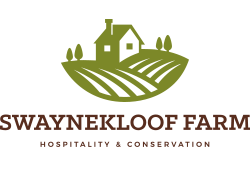It has been a long and trying 6 weeks since the storm that devastated many of the rivers, roads and mountains of the Western Cape. But thanks to the hard work and incredible skill of all the experts and workers involved, we are back in business.
Way back when...
A short history of the Vanderstel Pass its relationship with Swaynekloof Farm and Botrivier written by Peter Simmonds
Way back in 1679, Simon van der Stel, the new governor of the Cape, commissioned Olaff Bergh, a reliable young man from Cape Town to open up a wagon trail to what is now called the Overberg. He set off with two ox-drawn wagons, a team of men, and an accomplice named Ensign Hironimus Cruse. In those days the Cape Flats were not passable by wagon as the sand was too thick and soft and it was very swampy. He was forced to follow solid ground via Parow and the area now known as Stellenbosch. Thereafter he made his way to the area where Somerset West is located and cleared a path over the mountains later called Sir Lowry’s Pass by following the eland trails. Having cleared the mountain with great difficulty, his next barrier was the Grabouw River over which he had to construct a drift so that the wagons could pass safely. The next serious obstruction was the formidable Houw Hoek mountain. He chose to climb and descend this mountain along a treacherous route on the western seaward side and when he reached the bottom he outspanned on the banks of the Botrivier. This place became known as Compagniesdrift which later attracted settlers and grew into Botrivier Town. Olaff Bergh was to return along this route with wagons via Compagniesdrift in 1682 and 1686 when he went to salvage equipment from shipwrecks. Thereafter other trekkers began to use Olaff Bergh’s route for trade in the Overberg and as the traffic grew, a toll-gate was opened at Compagniesdrift/Botrivier.
At the top of the pass an inn was opened to accommodate this increase in traffic. This was the Houw Hoek Inn and it was the first hotel in South Africa. People stayed at the inn overnight before travelling down the pass to Botrivier and although this now takes only a couple of minutes by car on the N2, in those days, it was a full one day journey (one outspan). Once the route was opened for cattle drawn wagons and was being maintained with money from the tollgate, trade with the local Khoi-Khoi grew rapidly. Later some traders managed to find a far easier path down the Houw Hoek mountain by following the eastern slopes which by-passed both Houw Hoek Inn and the toll at Botrivier. It became a well-kept secret for many years and it happened to go straight through what is now our farm, Swaynekloof. In fact the old wagon way through the farm can still be seen. After many years of using this secret route it was eventually discovered and an angry governor decided to build a second toll on our farm. The old building of this toll still exists at the back of our farm and as a result of this toll, the original name of our farm was Schuldpadsgat (tollgate). The site of this mini toll was chosen because of a spring nearby in the otherwise dry riverbed. This spring provides a small pool of water on the surface, even during the driest season and it provided a place of rest for the cattle while the toll was paid and for overnight rest.
Further Reading
LIttle is known of the historical past of the Vanderstel Pass. Pete will write an article to fill in the gaps and bring alive the past - evading toll gates and escaping taxes!


Share This Post